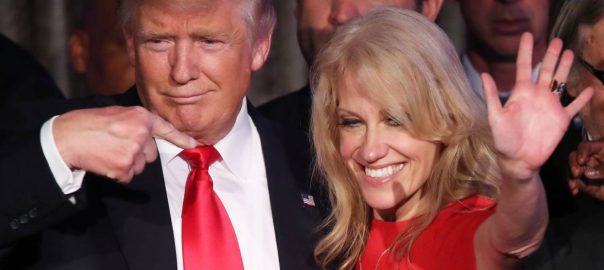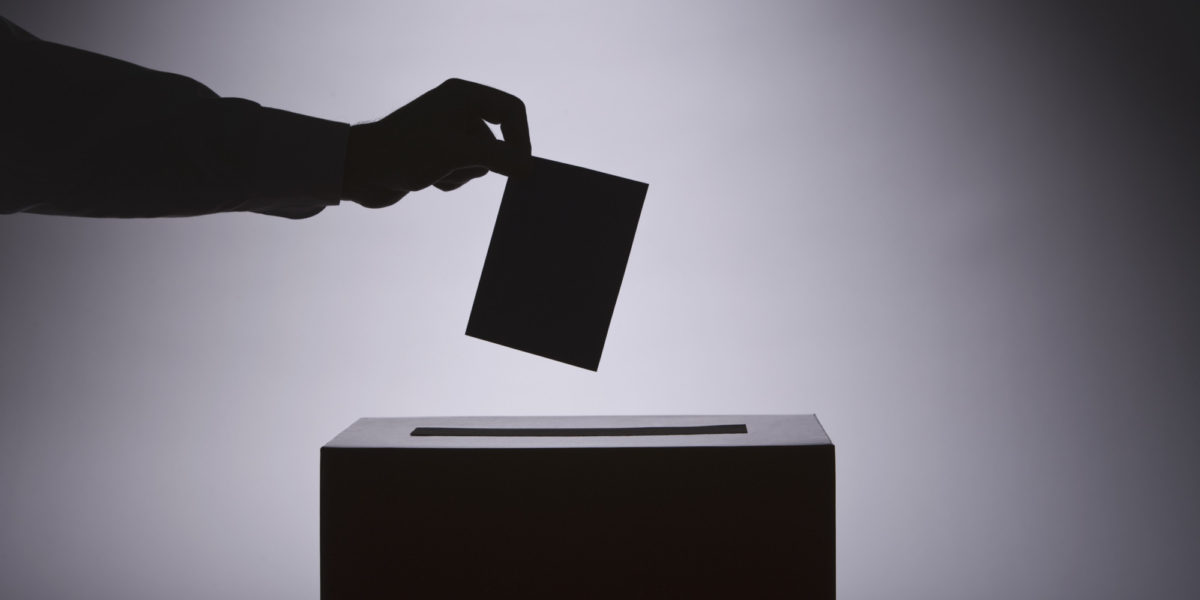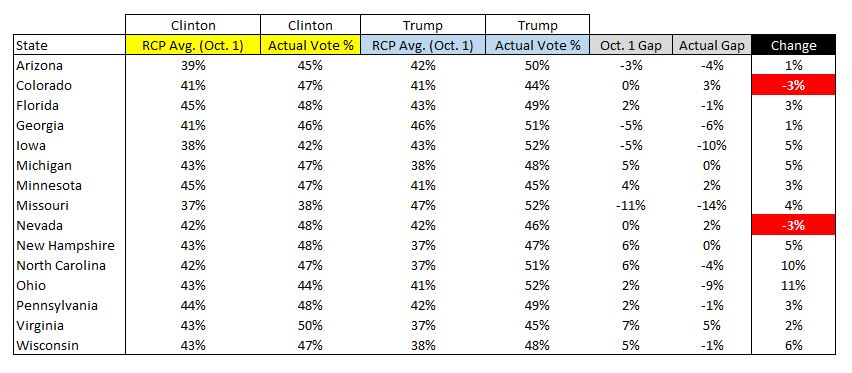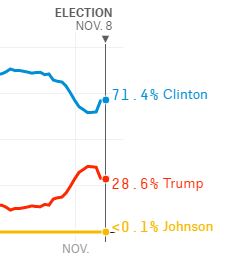By Kent R. Kroeger
(Source: NuQum.com, December 5, 2016) “Winning campaigns is a thrilling experience, but losing campaigns crush your soul,” veteran Republican communications strategist, Michael McKinnon, recently wrote in The Daily Beast.
Having worked on my brother’s unsuccessful Iowa House District 60 campaign this past election, I understand McKinnon’s lament all too well.
My brother, Gary Kroeger, the Democratic candidate for the Iowa House District 60 seat that covers most of southern Waterloo and Cedar Falls, was running against Walt Rogers, a three-term Republican incumbent and an assistant leader in the Iowa House.
We lost 58 percent to 42 percent.
In the immediate aftermath, I needed to blame someone, besides myself. So, I went with the most available target: Hillary Clinton. I know. Too simplistic (and mostly wrong). But it felt good. However, now, a month removed from the election, the answer is more complicated and more organic than found in a single person.
In my 30 years of working on political campaigns (mostly as a Virginia Republican), I have come to one inviolable conclusion: Political campaigns don’t matter as much as we think they do. At best, they nibble on the margins. External factors, such as the economy, incumbency, and the partisan composition of the electorate, explain most of the variation in outcomes. A well-run campaign using the available tools (TV, radio, direct mail, canvassing, phone banks, social media, etc.) to their maximum utility may gain a candidate three or four more percentage points. But not much more. In close races, that boost matters. In our race in District 60, it wouldn’t have mattered.
McKinnon’s diagnosis of Clinton’s defeat serves here as well: “Sometimes the currents are so deep it doesn’t matter how hard or how well you paddle.”
To Gary’s supporters who continue to send me emails or troll me on Facebook so they can tell me we should have gone negative against Walt Rogers, I say, “I’m changing my email address and there is no negative attack that would have changed this outcome.”
Let this sink in for a moment: Not a single Democrat won this year running against an incumbent Republican for the Iowa House. Some Democratic challengers ran negative ads and some didn’t. It didn’t matter. They all lost — by 11 percentage points, on average. Based on my statistical modeling of Iowa House races, Gary actually did two percentage points better than expected given the partisan composition of District 60.
In Iowa House elections from 1996 to 2014, incumbents from both parties won 93 percent of their races; Republican incumbents won 94 percent. In a Democratic year (2008, 2012) it’s hard enough for a Democratic challenger to beat an incumbent; in a Republican-dominated election, it’s nearly impossible.
Yet, in at state where Barack Obama can win twice and Trump won this year, there is enough year-to-year variation in voter preferences to defeat incumbents more often. Why are incumbents so safe in the presence of this much voter elasticity? There are long answers to this question. I will give you the short answer: both political parties like it that way and built a system to make it so. They are risk averse organizations whose pain in losing their own incumbent is far greater than the joy they feel in defeating another party’s incumbent. Subsequently, state parties spend most of their money and time keeping incumbents in power.
Gary’s defeat was determined before he even declared his candidacy — but there are others that must share the blame.
Let’s start with the Iowa Democratic Party (IDP). It didn’t help that Gary couldn’t catch a draft from the IDP’s hand-picked candidates for the U.S. Senate and U.S. House’s 1st District. Monica Vernon, the Democrat’s U.S. House candidate, was a good campaigner running against a tough opponent, but our Democratic U.S. Senate candidate, Patty Judge, was a biblical-scale cataclysm. While acknowledging Chuck Grassley was a tough out, Judge was, as Donald Trump might say, “low energy.” And that’s being kind. She was the electoral version of the airship Hindenburg. All we missed was Simon Conway on WHO radio crying out “Oh, the humanity!” as her candidacy crashed and burned.
As part of the IDP’s post-election soul-searching, it must include an examination as to why their leadership felt it necessary to put their thumb on the scales during the primary process in favor of candidates like Judge. One of her primary opponents, Rob Hogg, an Iowa Senate Democrat from Cedar Rapids, worked harder than any candidate I’ve ever seen. How did he lose to her? Seriously, an honest competition would have resulted in a different outcome. Genuine competition at the primary level makes for better general election candidates. The IDP needs to internalize that message.
After the Democrat’s caucus debacle in February, the Des Moines Register editorialized that “something smells in the (Iowa) Democratic Party.” The IDP convened a commission to make recommendations for changing the caucus process within the Democratic Party. However, I have seen nothing from that commission or the IDP that addresses the problems I saw caucus-night in Des Moines’ Precinct 59. It was an organizational mess posing as grassroots democracy. Had it not been for Iowa’s gracious Attorney General Tom Miller taking charge of our caucus as it spun out of control, we’d still be counting heads in Central High School’s auditorium.
Yet, my ultimate frustration is not with the IDP but at the presidential level. And you can’t talk about Democratic Party politics at the presidential level without talking about the Clintons – both of them.
It was Bill Clinton that began gutting the Democratic Party in 1992. Today’s pundits point to how the number of congressional and state-level Democrats declined under President Obama. Under his leadership, the Democrats transitioned from the party that dominated local, state and congressional politics to the regional out-of-power party that it is today. The fundraising machine he built to facilitate his election and re-election also saw the Democrats lose both U.S. congressional chambers in 1994.
The congressional Republicans, led by Newt Gingrich, proved the perfect foil for President Clinton, whose major legislative accomplishments occurred after the 1994 Republican takeover of Congress. The Democrats wouldn’t see a meaningful majority in either chamber until 2007.
Fast forward to 2016.
When Politico reported in May that the Hillary Victory Fund, a joint fundraising committee ostensibly organized to distribute funds to the state parties, was alleged to be a money diversion scheme to avoid restrictions on how much money the Democratic National Committee could pass to the Clinton campaign, we found it all too familiar. It was the Clinton way. It’s how they do business.
The result of that Clinton cleverness? The Democrats nominated a candidate who, in her vainglorious greed, ensured that money that would have helped the state parties ended up in her coffers. This Clintonian strategy of putting too heavy an emphasis on the presidential campaign helped the Republicans keep control of the U.S. House, U.S. Senate, governorships, and state legislatures. Oh! And they also won the presidency.
With the HMS Titanic at the top of the Democratic ticket, Trump and the Republicans were the HMS Carpathia tactically positioned to capture those working-class Democrats that jumped right before the Clinton campaign’s stern disappeared beneath the water.
The Kroeger for Iowa House campaign witnessed this in real-time on the election’s front lines: District 60 – a district Barack Obama won in 2008 and 2012.
We conducted two telephone opinion polls: one in late-September and one in late-October. In those polls we saw locally what echoed the Trump phenomenon nationally: A sizable number of Democrats abandoned their party in the last days of the campaign. We did not see it coming. Some Democrats, such as Iowa Senator Jeff Danielson, knew how to step outside the IDP playbook and run an independent-minded campaign that protected his support base when the Trump tsunami hit.
So, in late September after our first poll, the Kroeger campaign was feeling good. We estimated Trump and Clinton were basically tied. In the same poll, we estimated Gary was slightly ahead Walt, and was getting support from 75 percent of Democrats, half of independents, and 12 percent of Republicans. We were on target to hold our Democratic base at around 90 percent support, win a majority of independents (the largest party bloc in District 60), and hopefully grab over 10 percent of Republicans. That would be a winning outcome for us. We felt confident as we launched our first TV ad and a direct mail piece targeting independents.
By late-October, something changed. It was as if we woke up one morning and found ourselves in Idaho, not Iowa. Our final survey showed Trump with an 8-point lead over Clinton, mostly from an increase of 11 percentage points in support among Democrats in District 60. He saw little change in support from independents and Republicans. In Gary’s case, the change was more dramatic and devastating. His support from Democrats fell 30 percentage points to 45 percent and what was once a close race now had Walt ahead by 20 points (60% to 40%). What happened?
We were losing Democrats in District 60’s working-class neighborhoods.
The weekend before Election Day, having mined the October survey data, I canvassed Democratic households in Precincts 1 and 4 in Waterloo’s 1st Ward, an area south of University Avenue and west of Ansborough Avenue. These are working-class Democrats in precincts that voted for Obama over Romney by a wide margin in 2012 (58 percent to 40 percent).
The few folks that answered the door that warm, sunny afternoon were polite but blunt. A young mother summarized what I heard at other doors: “I won’t vote for Kroeger because he supports Hillary Clinton.”
“He’s a Democrat,” I said. “He has to support his party’s presidential nominee.”
“She’s corrupt,” she shot back. End of conversation. There is no script that can respond to that sentiment. The decision was hard-coded.
Yet, don’t assume the drivers in Trump support were easy to summarize in those working-class Democratic households. Other doors revealed different reasons for supporting Trump: Immigration, jobs, terrorism. Each door had its own its own rationale, though inevitably, the conversation would lead back to Clinton’s trustworthiness.
One father of two, who decided in the last week of the campaign to vote for Trump, provided what may be the reason why this election was so hard to predict based on polling:
“Hillary will win, so I’m voting for Trump in protest,” he said.
If that sentiment was common among voters, it suggests it would have been better for Clinton if the polls favored Trump in the final days. The impending reality of a Trump presidency might have driven more than a few Trump voters back into Clinton’s camp.
The rule-of-thumb in the campaign management handbook is that a candidate’s perceived ‘inevitability’ is a good thing as it creates a bandwagon effect.
However, based on this last election, I would modify that maxim this way: When most voters perceive the ‘inevitable’ candidate to be untrustworthy and dishonest, the bandwagon effect no longer works in that candidate’s favor.
I ended that afternoon thinking, “With so many different people and motivations out there, how do politicians win elections?” My 10-year-old son provided the best answer I’ve heard to date: “Somebody has to win.”
The opposite tendency among political pundits is to make simple things seem complicated. They often emphasize campaign tactics which tend to lead to more explanatory factors than are necessary to understand the outcome. I love when campaign consultants talk about ‘micro-targeting’ or ‘data mining.’ I know from experience these are false gods.
Yes, polling and marketing are critical to a successful campaign, but if Donald Trump has taught us anything, it is that ‘winging it’ works too. He is authentic in that he thinks the way voters think. That’s not a bad thing, if your goal is to win elections.
The morning after Election Day I made a list of the Kroeger for Iowa House’s tactical mistakes: We didn’t attack Walt’s voting record enough; we didn’t match Walt’s door-knocking prowess; we couldn’t match Walt’s late media ad buy – much of it funded by his party – that was eight times larger than ours; we didn’t answer his ads attacking Gary for his qualified support of Obamacare; and, finally, Walt’s campaign never gave us a genuine opening for attack. When incumbents do lose, it is often due to major gaffes and scandals. Walt was too disciplined for that.
Yet, beyond those factors, something more important worked in Walt’s favor. He ran an issue-based campaign. The nastiness that did occur was tame by modern standards. And while I may disagree with many of Walt’s policy positions, I respect the power of the “Smaller, Smarter” slogan that drove his candidacy. If we still believe public opinion polling (and I do), most voters across this nation support this message. In broad principle, at least. More importantly, the national Republicans have reinforced this message for over 40 years now and it has driven them to the dominance we see today at all levels of government.
McKinnon calls it a campaign’s narrative architecture. “Voters are attracted to candidates who lay out a storyline,” writes McKinnon. “Losing campaigns communicate unconnected streams of information, ideas, (and) speeches. That last line pretty much sums up our campaign’s communications. I failed my brother on that score. In contrast, Walt has carried the “Smaller, Smarter” water bucket since he was first elected in 2010 and it underscores his campaign’s communications.
Walt’s campaign told a story: (The threat) Iowa’s government is too big, too wasteful, and too intrusive. (The victims) All Iowans, but particularly the working class, suffer the most from the government’s wasteful spending and regulatory over-reach which inhibits economic growth. (The villain) There is no problem Democrats won’t try to solve using your money and increasing their control over your life. (The solution) Reduce the size of government, lower taxes, and increase the efficiency and accountability of existing government programs. (The hero) Elect Republicans, like Walt Rogers, and they will make government smaller while solving Iowa’s problems.
The cynic in me knows the Iowa Republicans will over-reach and all those noble ideas will become public policy disasters such as the one on the horizon with privatized Medicaid. But will the Iowa Democrats be there to take advantage of that oncoming train wreck?
A month removed from defeat, my heart won’t accept that Gary’s race was unwinnable. No doubt many party insiders thought Dan Dawson (R – Council Bluffs) had no chance against Iowa Senate
Leader Mike Gronstal (D – Council Bluffs), a seemingly permanent fixture in the Iowa legislature since 1985. Gronstal lost to Dawson by 8 percentage points. Incumbents can lose.
No, I won’t accept that the District 60 race was some vain quest. Instead, as the passions of the campaign subside, I blame myself for not knowing how to build the right narrative for Gary in this election. We failed to follow McKinnon’s campaign model. We didn’t tell a coherent story and Walt did.
And, of course, I also blame Hillary.
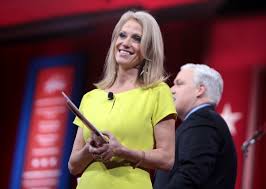 True, she has a good White House job and wouldn’t change parties anyway.
True, she has a good White House job and wouldn’t change parties anyway. To explain Clinton’s popular vote advantage, look at how she outspent Trump, particularly in the non-swing states. It was raw hubris that led Clinton’s campaign to outspend Trump’s campaign in national TV ad buys in the last weeks of the campaign. National TV buys when you needed to defend your Rust Belt states? Clinton’s staff was deploying resources to secure an electoral landslide when they should have been addressing their precarious situation in middle America. Conway’s data team knew the status on the ground; Clinton’s didn’t, or worse, ignored the empirical evidence. I would have attacked Robby Mook and John Podesta in a Stalinesque drunken rage on election night if they had bungled my campaign they way they did Clinton’s.
To explain Clinton’s popular vote advantage, look at how she outspent Trump, particularly in the non-swing states. It was raw hubris that led Clinton’s campaign to outspend Trump’s campaign in national TV ad buys in the last weeks of the campaign. National TV buys when you needed to defend your Rust Belt states? Clinton’s staff was deploying resources to secure an electoral landslide when they should have been addressing their precarious situation in middle America. Conway’s data team knew the status on the ground; Clinton’s didn’t, or worse, ignored the empirical evidence. I would have attacked Robby Mook and John Podesta in a Stalinesque drunken rage on election night if they had bungled my campaign they way they did Clinton’s.